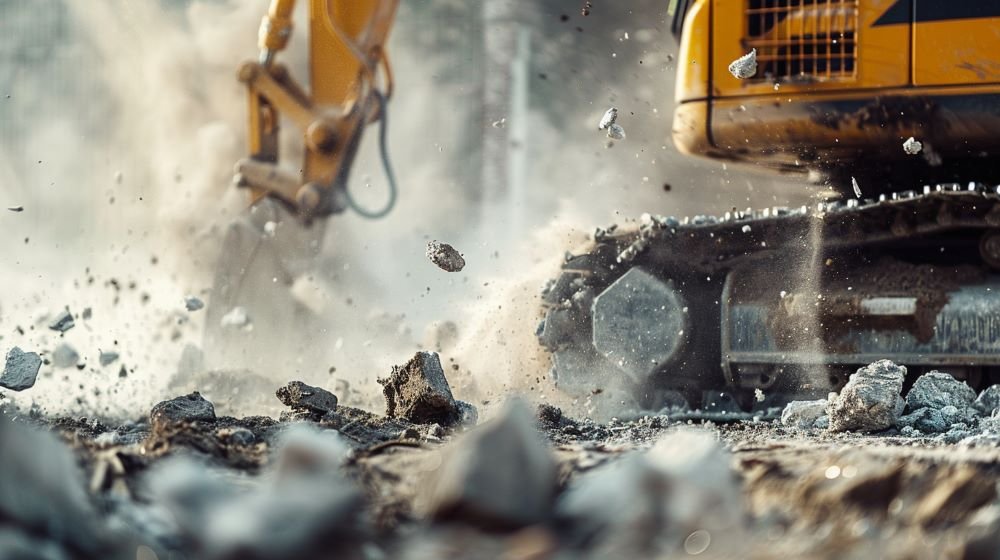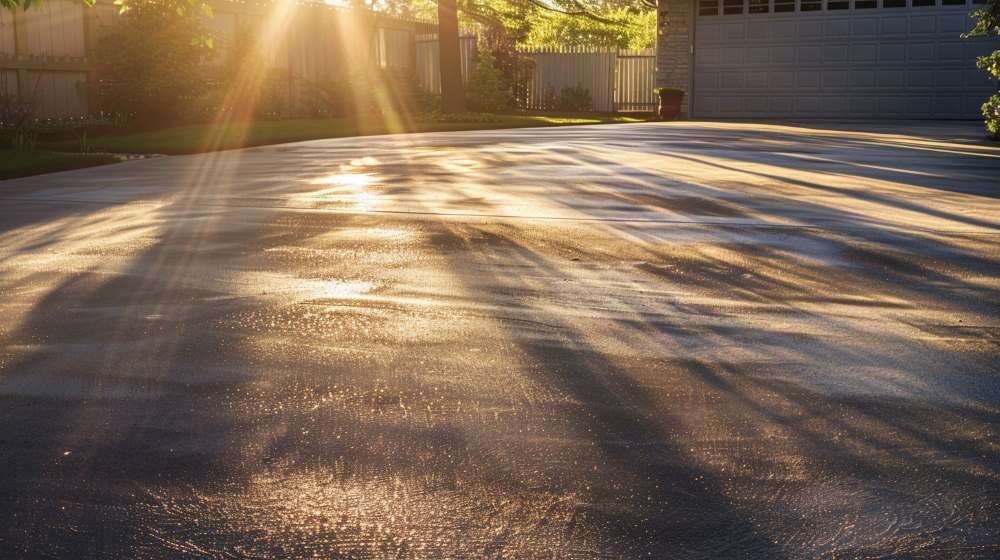Coloured concrete has become increasingly popular in Australia’s urban landscapes. This material is now being used to replace traditional building materials, offering a variety of aesthetic benefits and versatility. By incorporating coloured concrete into existing structures or creating something entirely new, it is possible to create vibrant and visually appealing environments that stand out from the crowd. This article will explore how coloured concrete is transforming Australian cities through its use in various applications such as architecture, landscaping, public spaces and more.
The use of coloured concrete offers many advantages over other conventional building materials, including improved durability and lower maintenance costs. Furthermore, this versatile material can be easily adapted to fit any style or budget while still providing high quality results. Coloured concrete also allows for an unlimited range of design possibilities – allowing architects, designers and clients alike to express their creativity with ease.
Finally, by taking advantage of the unique properties of this material, it is possible to add vibrancy and character to otherwise dull cityscapes – making them more attractive places to live and work in. Through exploring these different aspects of coloured concrete, this article will provide an overview on how it is changing the face of Australia’s urban landscape today.

1. Understanding Coloured Concrete
Coloured concrete is becoming increasingly popular in the urban landscape of Australia, offering a range of aesthetic possibilities to architects and designers. This article will explore how coloured concrete can be used to create aesthetically pleasing designs as well as its practical benefits.
The primary reason for using coloured concrete is that it offers an attractive alternative to traditional grey or white cement-based materials. Coloured concrete also has a number of advantages over other types of paving materials, including increased strength and durability, improved heat resistance, and greater flexibility with regard to design options. Additionally, coloured concrete can provide cost savings when compared to alternatives such as stone pavers or asphalt paving.
In terms of aesthetics, coloured concrete provides many opportunities for creative expression through colour combinations and texture selection. The use of multiple colours gives designers more freedom to create unique patterns and effects on walls, pathways, driveways and patios. Furthermore, by utilising different textures within the same surface area, one can achieve a variety of visual effects within a single space – from subtle gradations between shades to bold contrasts between hues. By integrating this type of creative work into existing architecture, one can transform a mundane backyard or street corner into something truly eye catching.
Overall, coloured concrete is providing Australians with exciting new opportunities for creating beautiful urban landscapes that are both functional and visually appealing. Not only does it offer cost savings when compared to other materials but its versatility allows for virtually limitless potential in terms of design possibilities. Whether used indoors or outdoors, the use of coloured concrete can add vibrancy and personality to any space while still delivering lasting performance attributes that are essential for long-term satisfaction.
2. Benefits Of Coloured Concrete
Coloured concrete is increasingly being used in Australia’s urban landscapes, as it offers a range of benefits that traditional grey or white concrete cannot provide. This article will discuss the advantages of using coloured concrete and how they may affect Australia’s cities.
Firstly, one benefit of coloured concrete is its aesthetic appeal. Coloured concrete can add vibrant hues to any space, creating an inviting atmosphere which catches people’s attention. For example, some residential developments have been known to incorporate red and yellow tones into their exteriors for a modern look. Furthermore, coloured pavements are becoming more common on city streets due to the visual enhancement they bring. As well as this, many public parks and gardens now feature colourful pathways as opposed to dull grey slabs.
Another advantage of using coloured concrete is its durability and low maintenance needs. Despite having colour pigments added during production, such materials still maintain strength similar to standard concretes without compromising longevity. Consequently, this makes them suitable for outdoor applications with heavier traffic levels where regular cleaning takes place. In addition to this, since most products are made from cementitious mixes containing various aggregates and binders like Portland cement – these concretes also possess excellent frost resistance properties ensuring further longevity within locations experiencing cold climates throughout winter months.
Finally, coloured concrete offers economic benefits too; usually costing no more than standard concretes when purchased at large volumes from reputable suppliers – yet providing a greater return when installed correctly due to increased footfall generated by attractive visuals resulting in higher sales turnover potential over time for businesses situated nearby along with additional leisure opportunities provided for local communities living close-by enhanced settings created through use of such designs .
3. Applications Of Coloured Concrete In Urban Landscaping
C
oloured concrete has become increasingly popular in urban landscapes due to its aesthetically pleasing appearance, durability and cost effectiveness. This article will explore the various ways coloured concrete can be used in urban landscaping projects.
The most common application for coloured concrete is paving and flooring. Coloured concrete can give a striking effect when laid as paving outdoors or indoors, with an array of available colours that range from earthy tones to bright hues. It can also be used for interior floors and walls, providing a more durable solution than other materials such as tiles or carpets. Concrete can also be textured and designed according to individual requirements, making it easy to create unique effects on outdoor pathways or driveways.
In addition to flooring applications, coloured concrete can also be used for creating eye-catching retaining walls, pool surrounds, patio slabs and even garden edgings. Specialised techniques such as stamping and staining allow a wide variety of designs – including timber finishes – while still offering the strength and longevity of regular concrete structures. Coloured aggregate may also be incorporated into the mix which adds further visual interest while allowing designers flexibility in their choice of colour palette. Furthermore, coloured sealers are often applied after construction to enhance the vibrancy of the hue over time.
These diverse uses demonstrate how coloured concrete is changing Australia’s urban landscapes by adding visual appeal to both indoor and outdoor spaces alike without compromising on quality or performance characteristics. With these features combined, it is no wonder why so many homeowners have embraced this innovative material when designing their dream homes and gardens.
4. Trends In Coloured Concrete Design
Coloured concrete is increasingly being utilized in urban landscaping projects, leading to shifts in the way Australia’s cities look. This article will explore current trends in coloured concrete design and their potential impact on Australian cityscapes.
The use of coloured concrete has enabled architects to create visually engaging and distinctive designs that stand out from traditional styles. Additionally, this material provides a range of creative opportunities for designers due to its high level of versatility while still providing structural integrity. For example, it can be used as an effective alternative to paint or tiles when considering external finishes such as cladding or paving. Furthermore, with many colours available, there are endless possibilities for creating unique looks through combinations of hues and textures.
A further trend emerging within coloured concrete design is the incorporation of sustainable principles into new builds. By utilising recycled materials during production processes, it is possible for developers and landscape architects to reduce energy consumption whilst still achieving aesthetically pleasing outcomes. Moreover, by employing eco-friendly techniques such as permeable paving solutions and rainwater harvesting systems alongside coloured concrete elements, projects can become more environmentally conscious without compromising on visual appeal.
It is clear that the increasing popularity of coloured concrete has driven innovation across the construction industry within Australia’s major cities. With its wide array of colour options combined with sustainability considerations, coloured concrete is rapidly becoming an integral part of modern urban landscapes throughout the country.
5. Challenges And Issues Of Coloured Concrete In Australia
Coloured concrete is a distinctive building material that has been gaining popularity in Australia. While it can be used as an eye-catching decorative element, coloured concrete also provides many practical benefits such as increased durability and easier maintenance than other materials. However, there are certain challenges associated with the use of this material in urban environments. This article will explore some of these issues in detail.
The most significant challenge of using coloured concrete in Australian cities is its cost. As a result of the complexity involved in producing coloured concrete, production costs tend to be higher than those associated with traditional grey concrete or asphalt surfaces. Additionally, due to colour fading over time, resurfacing and replacement may be required more frequently, adding further expense for users. Furthermore, accurate colour matching between different batches can be difficult to achieve without specialist knowledge and expertise.
Finally, one must consider the environmental impacts associated with coloured concrete’s production process and subsequent installation. The manufacture of coloured concrete requires extra steps compared to traditional grey cement mixes; energy consumption increases as additional materials are added into the mix to create vibrant colours. In addition, transport emissions may increase during installation if machinery needs to travel from distant locations or large quantities need to be moved around sites.
Overall then, while coloured concrete offers distinct advantages when employed creatively within modern urban spaces, it does come with certain drawbacks which need to be taken into account before making any decisions about usage. Careful consideration should be given by individuals on how best they can balance out both aesthetic appeal and economic realities when deciding whether or not this material is suitable for their project requirements
6. The Future Of Coloured Concrete In Urban Landscaping
Coloured concrete is a recent innovation in Australian urban landscaping that has the potential to revolutionise how cities are designed. To understand its future prospects, it is important to consider some of the challenges and issues associated with coloured concrete. This includes cost considerations, the complexity of the installation process, and ongoing maintenance requirements.
The main challenge faced by those looking to implement coloured concrete into their urban landscape design is the high initial costs involved. Coloured concrete requires additional materials such as pigment-based stains, which can add significantly to labour and material costs. Additionally, there may be practical complexities depending on whether it is being applied indoors or outdoors. The installation process for outdoor applications must be completed correctly using specialised techniques if it is to last over time without cracking or fading due to weathering conditions.
Given these factors, coloured concrete could still play an increasingly larger role in Australian urban landscapes. Its versatility makes it suitable for a range of uses such as driveways and pathways, patios, pavers and pool surrounds; while its wide array of vibrant colours enable architects and designers to create unique aesthetic designs that take full advantage of this versatile product’s capabilities. As technology advances further down the line and production processes become more efficient, we may see even more widespread use of coloured concrete in our urban environment going forward.
Conclusion
Coloured concrete has become increasingly popular in Australia, as it offers a range of benefits to urban landscaping. It can be used in residential, commercial and industrial applications and is available in a variety of colours, textures and sizes. The use of coloured concrete has the potential to create vibrant cityscapes that are both eye-catching and durable. Additionally, coloured concrete can help reduce maintenance costs associated with asphalt or other traditional paving materials, while providing an aesthetically pleasing finish for many years to come.
Although there are some challenges associated with using coloured concrete such as higher installation costs compared to standard paving solutions, these issues have been addressed through industry innovations over time. In addition, the increased availability of colour options allows designers more freedom when creating unique outdoor spaces that suit their individual needs. As public interest in creative design continues to grow, so too does the demand for coloured concrete products which provide architects and landscape designers with an exciting new platform on which they can express their artistic visions.
Overall, coloured concrete provides a multitude of advantages to homeowners, businesses and communities alike. Its aesthetic value helps enhance the visual appeal of any urban setting while its durability ensures long lasting beauty regardless of weather conditions or wear and tear from heavy foot traffic. Through continued research and innovation within the industry there is no doubt that coloured concrete will play a major role in shaping future Australian cities into vibrant artworks reflecting our culture’s collective creativity.





